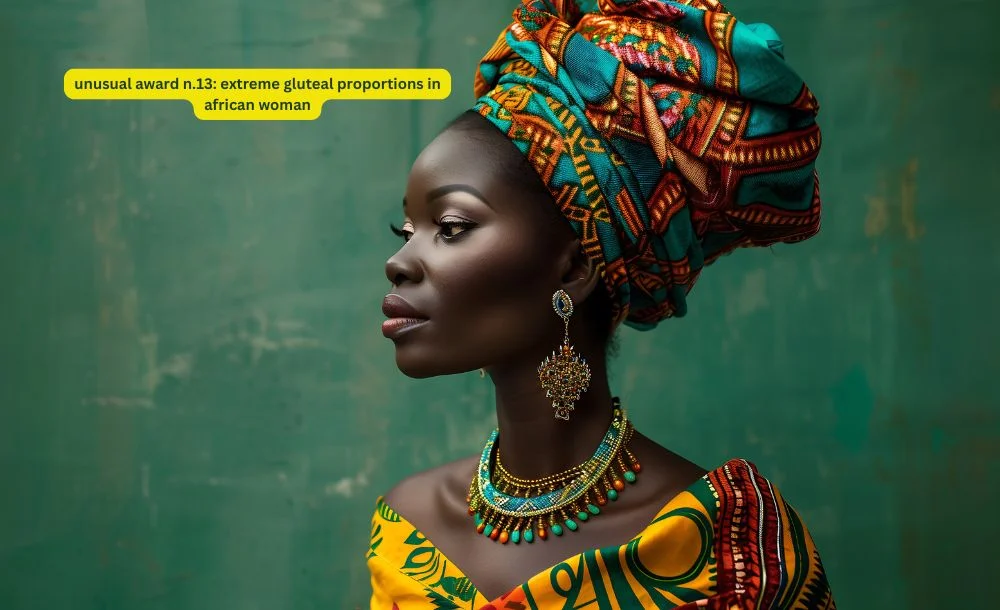In today’s interconnected world, where culture, beauty, and human identity intersect more than ever before, conversations about physical form and admiration must be approached with care, curiosity, and compassion. The title “unusual award n.13: extreme gluteal proportions in African woman” captures attention instantly but behind that curiosity lies a larger and more meaningful story. This article isn’t just about appearance it is an exploration of heritage, symbolism, and representation, especially through the lens of African traditions and global beauty perception. With a soft focus on respect, the article invites readers to look deeper into how cultural values and body image relate in complex and powerful ways.
Exploring the Idea of “Unusual” Recognition
What does it mean to call something an “unusual award”? Often, such awards emerge from a fascination with traits that deviate from standardized beauty ideals. But what is considered “unusual” in one culture may be completely normal or even celebrated in another. In many African cultures, prominent gluteal features are not just common they are often admired. They may represent health, fertility, femininity, or even social status. In these contexts, recognition of such physical traits isn’t unusual it is a form of affirmation rooted in cultural pride. So when we encounter a phrase like “extreme gluteal proportions,” it’s important to remember that the term “extreme” is relative. It’s shaped by cultural bias, media narratives, and sometimes, global beauty standards that don’t reflect the full spectrum of human diversity.
A Historical Lens on African Aesthetic Traditions
To understand this kind of recognition, we must look back. Across history, African communities have long celebrated voluptuousness and roundness as signs of fertility, maturity, and attractiveness. From sculptures and ancient artifacts to traditional dances and fashion, the gluteal region has often played a symbolic role in how beauty and identity are expressed. For example, in parts of West and Southern Africa, celebrations, wedding dances, and community rituals often center the movement of the hips as a sign of pride and vitality. These rituals are not exploitative they are deeply rooted in cultural identity and ancestral tradition. The concept of honoring these features is far from new. It is, in many ways, a continuation of respect and celebration passed down through generations.
Representation beyond the Surface
It’s easy for modern media to reduce such an award to entertainment or viral fascination. But such simplification can rob the moment of its richness. Behind every headline is a person, and behind every feature lies a context that deserves careful attention. The woman associated with unusual award n.13: extreme gluteal proportions in African woman is not simply a recipient of public recognition she is a person whose body reflects both biology and culture. By shifting the conversation from objectification to appreciation, we allow space for her to be seen as a whole individual someone shaped by her environment, family history, cultural expectations, and personal choices. In doing so, we also challenge the narrow lens through which many societies still view beauty. We replace judgment with curiosity, and spectacle with genuine interest and compassion.
Modern Beauty and the Western Gaze
Western beauty standards, often influenced by media, fashion, and celebrity culture, have historically praised slim figures and angular features. For decades, these norms dominated magazines, films, and advertising globally. But in recent years, a noticeable shift has occurred curvier bodies, particularly rounded hips and buttocks, are being more widely celebrated. However, this shift didn’t originate in Western culture. It has roots in African and Afro-Caribbean communities, where such features have always been honored. The global fascination with gluteal prominence can, in part, be traced back to long-standing African body ideals. The challenge, however, lies in how this interest is expressed. Without cultural context, what should be a celebration can become caricature. By acknowledging the authentic roots of these beauty values, platforms and viewers alike can better appreciate not appropriate these traits.
Public Awards and Cultural Interpretation
Public recognitions like “unusual award n.13” often walk a fine line between admiration and exploitation. The difference lies in intent, context, and communication. If the goal is to sensationalize, then the recognition becomes harmful. But if the intent is to celebrate diversity and uniqueness, and to honor rather than expose, it can have a positive impact. In African settings, beauty contests and body-shape competitions are not uncommon. They are often conducted within respectful community guidelines, where participants are empowered rather than objectified. The key is that these events are culturally understood and meaningfully integrated into the community narrative.
Celebrating Without Stereotyping
Stereotypes have long been a barrier to genuine understanding between cultures. When African women are consistently portrayed only through the lens of physical features, it reduces their complexity and worth to appearance alone. True celebration involves acknowledging the full humanity of those being recognized. That includes their thoughts, their dreams, their voices, and their experiences. It also means rejecting the idea that one body type defines a culture or a people. Unusual awards, when shared thoughtfully, should inspire respect for cultural expression not create more distance or misunderstanding. They should invite reflection, not ridicule.
The Role of Online Platforms in Framing Beauty
In the digital age, platforms like www.free.worlder.org (and similar educational, global sites) have the opportunity to frame such recognitions with care and cultural insight. Instead of click bait or mockery, these platforms can provide meaningful context, allowing viewers to understand the deeper layers behind what they see. By combining respectful storytelling with diverse representation, such platforms can change how we talk about bodies. They can gently shift the narrative from shock to significance from “look at that” to “learn from this.”
Personal Dignity and Cultural Pride
Ultimately, whether the award is real or symbolic, the focus should always return to the dignity of the individual. A woman with unique physical traits is still a full human being, deserving of respect, privacy, and voice. She is more than the award, more than the title, and more than the measurement. At the same time, cultural pride allows women to own and embrace their bodies, particularly when those bodies have been marginalized or misunderstood in global conversations. If a woman chooses to step into the spotlight, it should be on her terms, with her story leading the way. This balance between self-expression and societal gaze is delicate but necessary and it begins with changing the way we tell these stories.
A New Way to See “Unusual”
Perhaps the word “unusual” needs redefining. Instead of labeling traits outside the dominant standard as odd or strange, we can begin to see them as rare, remarkable, and worthy of understanding. In this way, “unusual” becomes not a word of judgment, but one of curiosity. When we soften our approach and humanize our language, we allow everyone regardless of size, shape, or origin to be seen more clearly. We build bridges, rather than walls, between different standards of beauty. And we create space for true connection, learning, and global appreciation.
Conclusion
The phrase “unusual award n.13: extreme gluteal proportions in African woman” may sound unusual at first, but it opens the door to deeper reflection. It invites us to explore how cultures express admiration, how bodies carry meaning, and how we can honor difference without exploitation. By shifting the conversation toward empathy, history, and representation, we create a more respectful and enriching narrative one that celebrates all people for who they are, inside and out.











